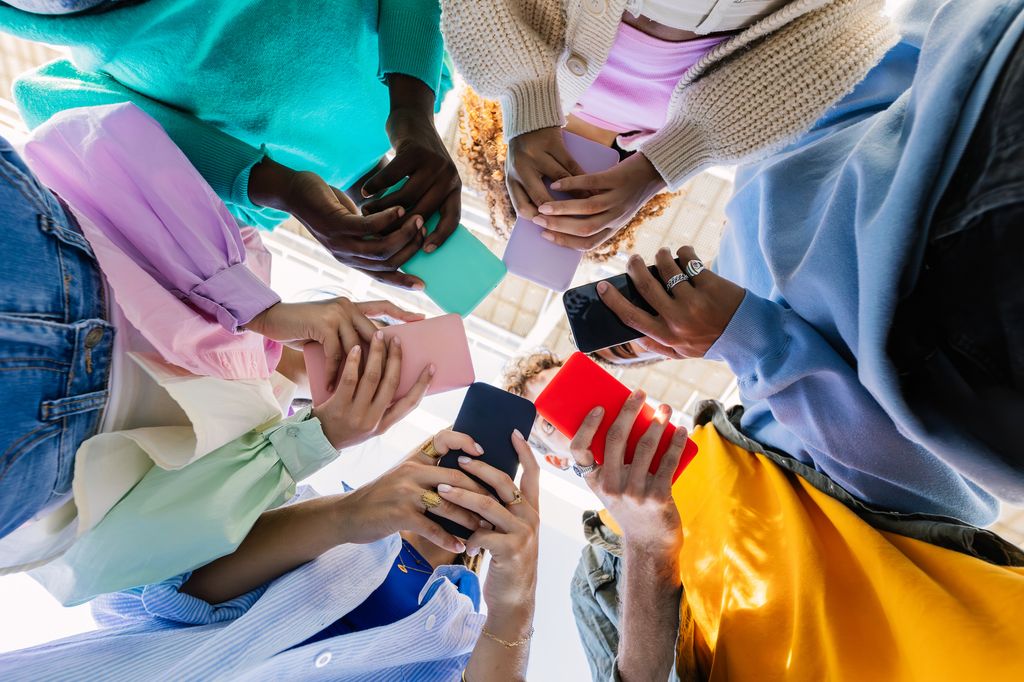If you’re a millennial like me, you probably hold dear the fact that your childhood was entirely dominated by the internet. Dial-up broadband was something you only used on occasions (with mum’s permission), and Mark Zuckerberg hadn’t yet introduced his monolith, ‘The Facebook’, to the world. Fast forwarding to teenage years, Myspace then became the cool kids’ platform, and evenings were mostly spent on MSN chatting to pals. However, it wasn’t long before social media giants grew and took over the internet as we know it.
This ultimately means that later-born Gen Zs (i.e. in the 2000s) and the entirety of Gen Alpha (born between 2010 and 2012) are the first generations to grow up almost entirely online, with social media being a huge presence in their youth.
Because of this, they’re extremely ‘online’ beings. They’re tech savvy and digitally literate, and know all the viral trends, including the one sweeping generations in the UK and US right now: the ‘6-7’ trend. If you have no idea what it means, you’re not alone – find out what there is to know about the trend and why some schoolteachers are pulling their hair out over its popularity.
What does ‘6-7’ mean?
Rather unhelpfully, the meme ‘6-7’ doesn’t really have a definitive meaning and can almost be used in any context. The jury is out on where it came from, with many debating the origin. Merriam-Webster, however, states: “Six seven (or 67 or 6 7, etc.) is a nonsensical expression used especially by teens and tweens that is connected to a rap song and also to a 6 ft. 7″ tall basketball player.”
Teens using it have described it as meaning everything and anything, while others use it as a replacement for “so-so” or “whatever”. Ultimately, this has meant teens and tweens have been saying it non-stop.
Why is ‘6-7’ being banned in schools
Due to the age group that the trend has spread among, naturally, the term is being used heavily in school environments, so much so that teachers are getting more than fed up with the trend. Some are going as far as to punish kids for using the phrase too many times in a day and banning it altogether.
Gabe Dannenbring, a seventh-grade schoolteacher in South Dakota, told CNN: “It’s like a plague – a virus that has taken over these kids’ minds. You can’t say any iteration of the numbers 6 or 7 without having at least 15 kids yell, ‘6-7!'”
Ultimately, the phrase has become a distraction in the classroom as groups of school kids are veering away from focusing on their studies and are instead too busy finding new ways to shout out the phrase.
What do these trends say about the TikTok generation?
But ‘6-7’ is far from the first trend to catch fire and baffle the minds of us elders. Earlier this year, the Cambridge Dictionary added the word “skibidi”, among others, to its official dictionary, much to the confusion of anyone over the age of 20 years old.
Esteban Touma, a linguist and cultural expert at global language learning platform Babbel, previously spoke to HELLO! to give his take: “We’re hardening new words into vocabulary faster than ever. New slang and social adaptation to using new words is happening at a rate we’ve not previously seen, thanks mostly to social media and the warp speed with which trends travel.
“These new entries are a perfect example of how fast cultural memes become permanent lexicon. While I don’t think of these additions as an ‘endorsement’ of what these words represent, it’s an interesting mapping of a linguistic terrain we’re actually walking.”
While Esteban notes that TikTok is the “powerful” channel through which our language is growing and expanding, it’s neither a good nor bad thing, but more something that will have to be accepted for our digital future.
“TikTok is a linguistic amplifier, not only spreading language but dictating how it performs,” Esteban notes. “While we can’t definitively say that this is a good thing, it is definitely a powerful thing.”














![‘Our Hero, Balthazar’ Thwarts a Would-Be School Shooter in First Images For Wild Satire Starring Noah Centineo and Asa Butterfield [Exclusive] ‘Our Hero, Balthazar’ Thwarts a Would-Be School Shooter in First Images For Wild Satire Starring Noah Centineo and Asa Butterfield [Exclusive]](https://static1.colliderimages.com/wordpress/wp-content/uploads/2025/06/untitled-design-70.jpg)





